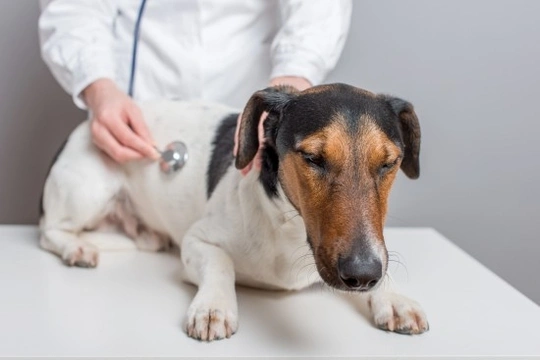Pets
Pets for studWanted petsBreedersAccessories & services
Knowledge hub
Support
Support & safety portal
How to Recognise and Deal with Internal Bleeding in Dogs
Any type of trauma whether a dog has been knocked over by a car or fallen from a significant height may result in internal bleeding. However, if a dog has some sort of serious disease or a bad infections, this too can lead to internal bleeding. It's easier to cope with a bleed when an open wound is involved because instinctively vets know how to stem it by either applying pressure or by dressing the wound with the right type of bandage. However, where internal bleeding is concerned, this is a far harder thing to spot and stem which means vets have to ensure vital organs receive enough oxygenated blood during the emergency.
The Signs There May be Internal Bleeding
The blood in all living things travels around the circulatory system and as it does so it feeds oxygen to vital organs. Should this circulation be interrupted and blood no longer reaches the organs, an animal (or human) goes into shock. The first thing you need to establish is why you think your pet is suffering from internal bleeding.
If you saw an accident involving a car then the chances are your dog may well have received a severe trauma to their body and as such there could be some internal bleeding. However, this may not always be the case so you need to watch out for any signs which could include the following:
Early signs of a problem
- Rapid heart rate
- Anxiety
- Bright red gums
- Shallow breathing
- Pulse rate is too easy to find
Secondary signs of a problem
- An increased heart rate
- Gums very pale or blue
- Lethargy
- Weakness
- Breathing is shallow
- Pulse is hard to find
Late signs of a problem
- Gums are mottled and white in colour
- Faster heart rate
- Weak pulse
- Glazed eyes unable to focus
- Coma
- Heart attack
- Death
By feeling your dogs abdomen using the flat of your hand, you may be able to detect whether or not there is any internal bleeding. When you do this you have to be extremely gentle and never poke or slap your pet's tummy. If everything is normal, your dog's stomach should feel soft and slightly squishy almost bouncy to the touch – one good idea to lie down and feel your own stomach to get to know how a normal healthy tummy should feel.
If, however, you gently bounce your hand on your pet's tummy and it feels tight and hard this could be an indication of internal bleeding into the abdomen. The blood would be filling the space inside your pet's stomach and therefore causes it to swell making it feel that much harder and appear almost bloated.
Internal Bleeding Needs Urgent Veterinary Attention
If you suspect your dog is experiencing any internal bleeding as a result of a trauma or other reason, you need to get them to the vet as a matter of urgency and you need to act fast. Although the vet would not be able to stop the bleeding as such, they would be able to minimise the effect this blood loss has on your dog's vital organs which is crucial.
Temporary Measures You Can Take
There are certain things you can do that will help your dog if they are suffering from internal bleeding which are as follows:
- Very quickly but gently, lay your dog on their backs
- Gently hold their back legs up in the air which will help get the much needed oxygenated blood to their brains as soon as physically possible
If your dog is going into shock you need to act fast and do the following:
- You need to get hold of a strong board that will take your pet's weight and lay your dog on it making sure they are lying on their right hand side – if they do go into shock, you may have to give your pet CPR
- Wrap your dog in a blanket or towel and secure them to the board with it
- Get a cushion and place this under the board and this has to be right under their hind legs
- Tilt the board up high enough so the much needed blood can flow to your pet's brain
- Phone the vet and tell of them of the emergency
- The board acts like a stretcher and will keep your dog's body in the right position whilst you get them to the vet ensuring the flow of blood goes to their brains
You need to use a board because without this, your pet's body would sag and you would not be able to tilt them at the right angle to ensure oxygenated blood reaches their brain.
Conclusion
If you suspect your dog is experiencing internal bleeding, you need to treat this as a life threatening situation for your pet. They could easily go into shock if you don't act fast enough. You would need to get them to the vet as a matter of emergency so they could to do everything in their power to ensure oxygenated blood reaches your pet's vital organs and their brain. It is much better to be safe than sorry if you think there is any internal bleeding going on whether your dog has been hit by a car, fallen from a height or is suffering from a very serious disease which could lead to internal bleeding.



